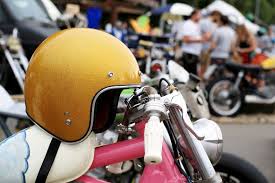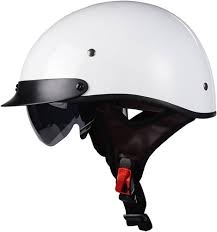Motorcycle helmets are a crucial piece of safety gear for riders of all experience levels. Not only do they protect your head in the event of a crash, but they also offer comfort and enhance the overall riding experience. In this article, we’ll delve into the importance of motorcycle helmets, the different types available, and tips for choosing the right helmet for your needs.
The Importance of Motorcycle Helmets
Wearing a motorcycle helmet significantly reduces the risk of severe head injuries and fatalities in accidents. According to studies, helmets are estimated to be 37% effective in preventing fatal injuries to motorcycle riders and 41% effective for motorcycle passengers. Beyond safety, helmets can also protect against weather elements, debris, and wind noise, making for a more comfortable ride.
Types of Motorcycle Helmets
- Full-Face Helmets
- Protection: Covers the entire head and face, offering the highest level of protection.
- Features: Often include visors that protect against sun, wind, and debris.
- Use: Ideal for all types of riding, especially high-speed and long-distance travel.
- Modular (Flip-Up) Helmets
- Design: Combines features of full-face and open-face helmets, with a chin bar that can be flipped up.
- Convenience: Allows riders to easily communicate and take breaks without removing the helmet.
- Use: Popular among touring and adventure riders.
- Open-Face (3/4) Helmets
- Coverage: Protects the top, back, and sides of the head but leaves the face exposed.
- Visibility: Offers a wide field of vision.
- Use: Suitable for city riding and cruiser motorcycles.
- Half Helmets
- Coverage: Protects the top of the head, offering minimal coverage.
- Style: Preferred for its lightweight and stylish design.
- Use: Common among cruiser and vintage motorcycle riders.
- Off-Road Helmets
- Design: Features an elongated chin bar and a visor, optimized for dirt and off-road riding.
- Ventilation: Enhanced airflow to keep riders cool during intense activity.
- Use: Best for motocross and trail riding.
- Dual-Sport Helmets
- Versatility: Combines elements of off-road and full-face helmets.
- Functionality: Equipped with a visor and a face shield, suitable for both on-road and off-road riding.
- Use: Ideal for adventure and dual-sport riders.
How to Choose the Right Motorcycle Helmet
- Fit and Comfort
- Proper Sizing: Measure your head circumference and choose a helmet size that fits snugly without being too tight.
- Try Before You Buy: If possible, try on helmets to ensure a good fit. Look for pressure points or discomfort.
- Safety Standards
- Certification: Ensure the helmet meets safety standards such as DOT (Department of Transportation), ECE (Economic Commission for Europe), or Snell certification.
- Build Quality: Check for solid construction and quality materials.
- Ventilation
- Airflow: Good ventilation is essential for comfort, especially during long rides or in hot weather.
- Adjustable Vents: Look for helmets with adjustable ventilation systems.
- Visibility
- Field of Vision: Ensure the helmet provides a wide field of vision.
- Visor Features: Consider helmets with anti-fog and UV-protected visors.
- Additional Features
- Communication Systems: Some helmets come with built-in Bluetooth systems for communication and music.
- Interior Lining: Removable and washable liners help maintain hygiene and comfort.
Investing in a high-quality motorcycle helmet is essential for your safety and overall riding experience. By understanding the different types of helmets and knowing what features to look for, you can make an informed decision that best suits your riding style and needs. Always prioritize safety and comfort to enjoy your rides with peace of mind.
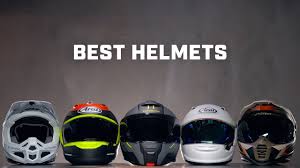

Fashionable Motorbike Helmets: Combining Safety and Style
Motorbike helmets are essential for safety, but that doesn’t mean you have to compromise on style. Fashionable motorbike helmets offer the perfect blend of protection and aesthetic appeal, allowing riders to express their personality while staying safe. In this article, we’ll explore the trend of fashionable motorbike helmets, key features to look for, and tips on how to choose the right stylish helmet for you.
The Rise of Fashionable Motorbike Helmets
In recent years, the motorbike helmet market has seen a surge in designs that cater to fashion-conscious riders. These helmets are not only designed to meet rigorous safety standards but also to reflect the latest trends and personal styles. From sleek and minimalist designs to vibrant and artistic graphics, there’s a fashionable helmet for every type of rider.
Key Features of Fashionable Motorbike Helmets
- Design and Aesthetics
- Custom Graphics: Many brands offer helmets with unique and eye-catching designs, ranging from classic pinstripes to bold, contemporary art.
- Color Options: Helmets come in a wide array of colors, including metallic finishes, matte black, neon brights, and vintage hues.
- Materials and Finish
- High-Quality Materials: Stylish helmets often use premium materials like carbon fiber, fiberglass, and high-grade polycarbonate, ensuring both safety and a luxurious feel.
- Finishing Touches: Attention to detail with elements such as chrome trims, leather accents, and premium paint finishes enhances the helmet’s overall look.
- Comfort and Fit
- Ergonomic Design: Fashionable helmets are designed to be as comfortable as they are stylish, with ergonomic shapes that fit snugly and securely.
- Interior Lining: Soft, removable, and washable liners made from high-quality fabrics add to the comfort and hygiene of the helmet.
- Safety Features
- Certified Protection: Despite their stylish appearance, these helmets meet safety standards such as DOT, ECE, or Snell certifications.
- Advanced Technology: Features like multi-density EPS foam, reinforced chin straps, and emergency release systems ensure maximum protection.
- Additional Features
- Visors and Shields: Options include tinted, mirrored, or photochromatic visors that not only protect your eyes but also add a stylish element.
- Bluetooth Integration: Some fashionable helmets come with built-in Bluetooth systems for music, navigation, and communication.
How to Choose a Fashionable Motorbike Helmet
- Determine Your Style
- Personal Preference: Consider what styles and colors reflect your personality. Whether you prefer a vintage look or a modern, edgy design, there’s a helmet for you.
- Bike Compatibility: Ensure the helmet complements the style of your motorcycle for a cohesive look.
- Prioritize Fit and Comfort
- Proper Sizing: Measure your head accurately and refer to the brand’s sizing chart to find the perfect fit.
- Try Before You Buy: If possible, try on different helmets to ensure they fit comfortably and securely.
- Check Safety Standards
- Certifications: Always choose helmets that meet or exceed safety certifications to ensure they provide adequate protection.
- Construction Quality: Inspect the build quality and materials used to ensure durability and safety.
- Consider Practical Features
- Ventilation: Good airflow is crucial for comfort, especially during long rides.
- Visor Options: Choose a helmet with a visor that suits your riding conditions, such as anti-fog or UV protection.
Fashionable motorbike helmets allow you to ride in style without compromising on safety. By understanding the key features and knowing how to choose the right helmet, you can find one that meets your aesthetic and protective needs. Whether you’re cruising through the city or hitting the open road, a stylish helmet is the perfect accessory to complete your riding ensemble. Stay safe and look great on every ride!
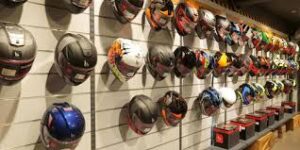
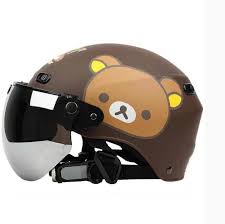
Motorcycle Helmet Exposed: Unveiling the Essential Safety Gear
Motorcycle helmets are a critical piece of safety equipment for every rider. They not only protect your head in the event of an accident but also enhance your overall riding experience by offering comfort and style. In this article, we’ll expose the critical aspects of motorcycle helmets, including their construction, importance, and tips for choosing the right one.
The Anatomy of a Motorcycle Helmet
To truly understand the value of a motorcycle helmet, it’s essential to look at its key components:
- Outer Shell
- Material: Typically made from polycarbonate, fiberglass, or carbon fiber, the outer shell is designed to disperse impact energy and resist penetration.
- Function: Protects against abrasions and punctures, shielding the head from direct impacts.
- Impact-Absorbing Liner
- Material: Usually constructed from expanded polystyrene (EPS) foam.
- Function: Absorbs and dissipates impact energy, reducing the force transferred to the rider’s head.
- Comfort Padding
- Material: Soft foam and fabric.
- Function: Provides a comfortable fit, wicks away moisture, and helps with temperature control.
- Chin Strap
- Material: Nylon webbing.
- Function: Keeps the helmet securely in place during a ride. Often features a quick-release buckle for convenience.
- Visor
- Material: Clear or tinted polycarbonate.
- Function: Protects the eyes from wind, debris, and UV rays. Some visors are also anti-fog and scratch-resistant.
The Importance of Motorcycle Helmets
Motorcycle helmets save lives and reduce the severity of injuries. Here’s why they are indispensable:
- Protection from Head Injuries
- Statistics: Helmets are estimated to be 37% effective in preventing fatal injuries and 67% effective in preventing brain injuries.
- Mechanism: Helmets absorb and spread out the force of an impact, protecting the skull and brain.
- Legal Requirements
- Regulations: Many regions have laws mandating the use of helmets while riding. Wearing a helmet ensures compliance and avoids fines.
- Enhanced Riding Experience
- Comfort: Modern helmets offer ventilation systems, noise reduction, and padding, making long rides more comfortable.
- Visibility: Helmets with visors protect against glare, rain, and debris, improving visibility.
- Weather Protection
- Elements: Helmets shield against rain, wind, and cold, helping to maintain focus and comfort during rides.
Choosing the Right Motorcycle Helmet
Selecting the perfect helmet involves considering several factors:
- Type of Helmet
- Full-Face: Offers maximum protection for the entire head and face.
- Modular (Flip-Up): Versatile with a chin bar that can be lifted.
- Open-Face (3/4): Covers the head but leaves the face exposed.
- Half Helmet: Provides minimal coverage, mainly protecting the top of the head.
- Off-Road: Designed for dirt biking, with extended chin bars and visors.
- Dual-Sport: Hybrid of full-face and off-road helmets, suitable for both on and off-road use.
- Fit and Comfort
- Sizing: Measure your head circumference and consult size charts. The helmet should fit snugly without being too tight.
- Comfort Features: Look for helmets with adjustable straps, removable liners, and adequate ventilation.
- Safety Standards
- Certifications: Ensure the helmet meets standards such as DOT, ECE, or Snell.
- Construction: Check for durable materials and solid construction.
- Additional Features
- Visors: Options for clear, tinted, or photochromatic visors.
- Communication Systems: Some helmets come with built-in Bluetooth for communication and navigation.
- Aesthetic: Choose a design that reflects your style without compromising on safety.
Motorcycle helmets are a vital component of rider safety, providing essential protection, comfort, and style. By understanding the anatomy and importance of helmets and knowing how to choose the right one, riders can make informed decisions to enhance their safety on the road. Always prioritize wearing a helmet to protect yourself and ensure a safer riding experience.
